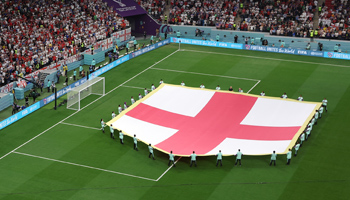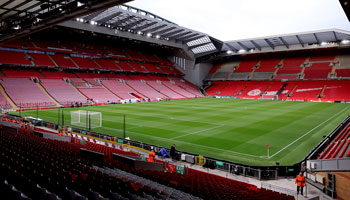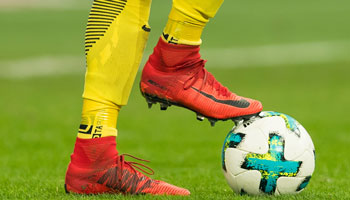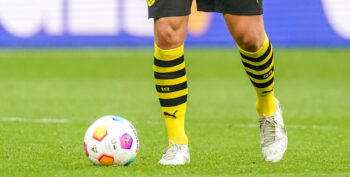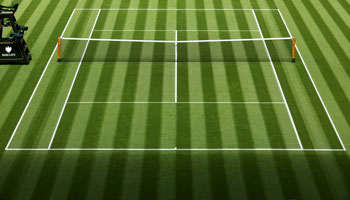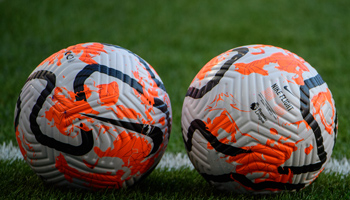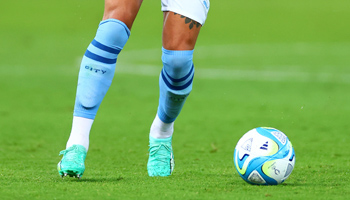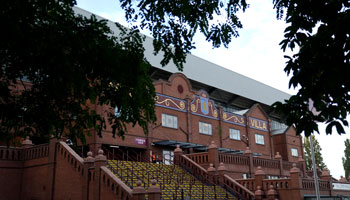Talk of Chelsea’s ability to emulate Arsenal’s legendary ‘Invincibles’ side of 2003/04 had begun long before they beat Crystal Palace in precisely the kind of match they lost as recently as last season.
Coming up to a quarter of the way through the campaign, Jose Mourinho’s side can be backed at 16/1 to emulate a Gunners’ achievement that remains unparalleled in modern English times.
In order to ascertain whether they have what it takes to accomplish such a feat, we here at news.bwin.com/en/ have to decided to compare the two sides in just about every manner imaginable.
So, settle down by the fire, pour yourself a glass of the finest and don your reading glasses.
Manager
By the time 2003/04 rolled around Arsene Wenger had already won two Premier League titles and, perhaps significantly, thrown one away in the 2002/03 campaign, when they let slip an eight-point lead over Manchester United.
The Frenchman was entering his eighth successive season in the English top flight.
By contrast, while far more decorated internationally, Mourinho is slightly less steeped in the domestic game, having recently begun his second season back in Blighty after a initial spell of just over three seasons at Stamford Bridge a decade ago.
They are tactically of different schools, with Mourinho more willing to embrace pragmatism than his more idealistic counterpart.
Yet both men have fostered a strong collective ethic in their sides, characterised in the 2003/04 Arsenal’s case by a harmonious quick-passing style and one-for-all antagonism and, in the case of Mourinho’s sides, by an unforgiving approach to mercurial talents (Joe Cole, Juan Mata) that failed to subjugate themselves to the demands of his system.
Squad depth
In previewing the 2003/04 season Independent journalist Glenn Moore was doubtful Wenger had the requisite strength in numbers, suggesting:
“They will be thereabouts, but unless Wenger finally puts his faith in youth, and the likes of Jérémie Aliadière, Jermaine Pennant and Phillipe Senderos repay him, they may lack the depth to sustain a title campaign.”
However, the Arsenal boss felt differently, as he told Amy Lawrence in her book ‘Invincible’, suggesting:
“That season we could have won everything. I tried to do it. We had the squad to do it. We had 16 or 17 players (only 20 made more than eight league appearances) of top, top level.”
Looking at the Arsenal squad at the time, his claims, with a small amount of leeway allowed for nostalgia and hindsight, don’t seem that outlandish.
Mourinho would be far too coy to tally the number of his squad who can be positioned in the same bracket publicly, but his Chelsea squad can claim to have a similar amount of players out of the highest echelon.
Transfer business
Jens Lehmann’s arrival from Borussia Dortmund was the sole summer addition Wenger made to his squad that went straight into his first team.
Although the likes of Gael Clichy, Phillipe Senderos and Jose Antonio Reyes (bought in January) played their parts, the vast majority of the would be-starters had been in situ at Highbury for at least a campaign.
The Gunners’ outgoings were similarly staid, with David Seaman, approaching pension age, the sole high-profile departure.
Chelsea have experienced a greater degree of churn this summer, inducting three players in Cesc Fabregas, Diego Costa and Filipe Luis, who will all have arrived with a first team place their legitimate expectation.
At the same time, they have let go two uber stalwarts in Frank Lampard and Ashley Cole.
Meanwhile high-class deputisers Demba Ba, and particularly David Luiz haven’t been replaced in a like-for like fashion.
Squad dynamic
In the era of the ‘Invincibles’ Arsenal’s average squad age was 27.6.
This term the mean vintage of Chelsea’s Premier League squad is 26.2, a number that drops to 25.5 when pensionable outlier Mark Schwarzer is factored out of the equation.
As such they must defy a fair deficit in experience if they are to match the Gunners’ feat.
In the aforementioned Lawrence tome, Wenger paints the picture of a group that motivated each other to ever-higher standards:
“They were demanding of each other. They were really strong personalities. In the dressing room it was not always easy. But there was a global positiveness about them, and competitiveness as well”.
At Stamford Bridge Mourinho also has a hearty helping of players who have the right to demand respect from their teammates, including assorted recent Champions League, La Liga, European Championship, African Cup of Nations and World Cup winners.
However, it would be difficult to imagine John Terry and Thibaut Courtois tearing strips off each other over conceded goals minutes after winning the league, as Sol Campbell and Lehmann did at White Hart Lane in 2003/04.
Tactical flexibility
Here Chelsea have undoubtedly exhibited a greater tendency to change things up formation wise, with an admittedly fluid 4-4-2 the fulcrum from which all the omnipotent Arsenal’s magic was accomplished.
By contrast Mourinho uses two distinct tactical settings, the more expansive 4-2-3-1 when a lesser calibre of opposition allow and the 4-3-3 wheeled out for games he dare not lose.
However, Arsenal’s bog-standard configuration belied a pack of midfielders and attackers every bit as adaptable as the Portuguese has at his disposal.
Predominantly central players such as Ray Parlour and Edu were often used on the wings when necessary, while Jose Antonio Reyes and Sylvain Wiltord were both similarly adept as strikers as they were on the flanks.
League competition
Prior to Arsenal’s unbeaten campaign, Wenger had identified his club’s main title rivals, adding Newcastle and Liverpool to the more established duo of Manchester United and a Chelsea side in their first season as Roman Abramovich’s plaything.
It would be natural to assume things are more competitive these days with not one, but two absurdly rich clubs involved and United doing a good job of rivalling the budgets of the Blues and their city neighbours in the summer window.
The league tables in 2003/04 and last season bear this out.
In the year of the ‘Invincibles’, the Gunners won the division by 11 points, with the top three pulling 15 points clear of Liverpool in fourth (table courtesy of Wikipedia).
Last term things were less cut and dried, with only four points separating the medal positions and a 15-point jump back from third-placed Chelsea encompassing the first six finishers.
If Jose Mourinho’s side are to go unbeaten they will have to do so in a more top-heavy Premier League.
Defence
As has previously been mentioned, just as Thibaut Courtois is enjoying his first season as Chelsea number uno having supplanted a long-standing club stalwart, the ‘Invincibles’ began their historic campaign with an all new stopper (Lehmann) in nets following David Seaman’s departure to Manchester City.
In it’s second term as a quartet, Chelsea’s back four is arguably more settled than the 2003/04 brigade as a whole.
Despite Cole, Campbell and Lauren all having arrived in the Arsenal first team two seasons before the unbeaten campaign, Kolo Toure was in his freshman year in central defence having impressed in pre-season.
However his ability also to fill in for the Cameroonian at right-back gave allowed the the rearguard to maintain a high level of consistency in personnel.
At present Chelsea are averaging one goal conceded per match, some way off the 0.68 strikes shipped an outing in the Gunners’ blemish free championship.
Given a massive 12 draws were recorded in the Invincibles’ title win this could be a notable factoid.
Midfield
The Arsenal engine room had hoovered up the previous two World Cups courtesy of Patrick Vieira and Gilberto Silva, suggesting it had the edge in pedigree on the current Chelsea ‘two’ for whom only Fabregas has commensurate experience, despite Nemanja Matic’s obvious quality.
Arguably it’s the Blues of today who seemingly have the more creative central midfield however, with Arsenal’s middle-men first and and foremost about industry and providing a platform for their wingers and central forwards to cut the opposition to ribbons.
But, as a consequence the Gunners’ twosome offered a more comprehensive spoiling brigade in the middle third, with both Vieira and Gilberto, rather than simply Matic in Chelsea’s case, protectors of the highest order.
Attack
Wenger’s indomitable XI averaged almost a goal less per game in 2003/04 (1.92) than Chelsea have so far this term (2.88), a sway which to some extent mitigates Chelsea’s inferior comparative defence.
Only Thierry Henry (30 goals) and Robert Pires (14) reached double figures in league efforts for the north London outfit, with no other squad member surpassing four strikes.
Oddly it seems Chelsea may have a similar set up this term with Diego Costa well clear of his colleagues in the charts and Eden Hazard’s 14 strikes last term suggesting he is primed to reprise ‘Pipi’s’ supporting role.
The memory of the glorious Dennis Bergkamp’s importance in the number ten berth for Arsene Wenger’s men is one that may have grown slightly with nostalgia, as the Dutchman started only 21 of the 38 games in 2003/04, often giving way to Reyes after the Spaniard’s January signing.
Chelsea also occasionally remove their advanced playmaker, most often Oscar, though this is more often a deference to a more defensive mindset than in the case of the Gunners, for whom the changed merely signalled an alteration in attacking focus.
Conclusions
There are numerous similarities between the ‘Invincibles’ of 2013/14 and the Chelsea side this term.
Some, such as having a goal keeper in his first campaign at the club, or relying on a single striker for the majority of their goals don’t necessarily seem particularly reassuring, but clearly are no barrier to going unbeaten.
Then there are their managers’ preference for a small core of adaptable players, despite the demands of competing in at least three competitions seriously.
Tactically they differ chiefly only in the way that Cesc Fabregas provides a more devotedly attacking presence in central midfield for the Blues, with his side conceding and scoring more goals as a consequence.
Mourinho also has a younger squad, less experienced in playing alongside one another, for all their accumulated medals.
However, none of these subtle differences account as much for the increased difficulty level of Chelsea remaining in unbeaten league action all season long as something neither squad/manager had/has any control over whatsoever.
Namely, the increased competitiveness in the top seven places of the Premier League.



